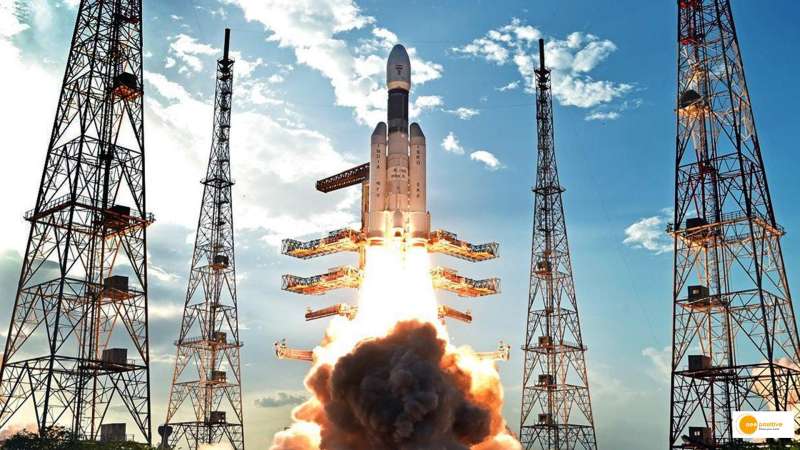

In 2022, the Indian Space Research Organization (ISRO) soared to new heights as it conducted new tests to validate its human spaceflight mission, built new training facilities for its astronauts, and established a new link with the private sector by testing India’s first privately built rocket. The year 2023 is going to be no different. Instead, as the lineup is complete, it could be a year of bigger, bolder, and braver missions to space from India.
The Indian space agency is planning some of the most ambitious missions it has ever attempted, with the most daring being the first test of the Gaganyaan mission, the country’s first astronaut mission that will take Indians beyond the planet in an indigenously developed system.
The Big missions for 2023
1. CHANDRAYAAN-3 TO THE MOON
With Nasa’s successful launch of the Artemis-1 mission to the Moon, India is ready to launch the successor to its most successful probe into lunar orbit. In June 2023, Chandrayaan-3 will be launched on GSLV Mk-III. While the mission will not be a carbon copy of Chandrayaan-2, it will use the orbiter of its predecessor, which is already hovering above the lunar surface. Isro Chairman S Somnath has said that the engineering on the spacecraft is significantly different and that they have made it more robust.
2. ADITYA L1 TO THE SUN
While Europe and the United States have already sent probes to better understand the physics of the Sun and the evolution of the star at the centre of our solar system, India is planning its own mission. The Aditya L1 mission will be launched to the Lagrange point 1 in 2023. (L1). The Earth-Sun system’s L1 point provides an uninterrupted view of the sun and is currently home to Nasa’s Solar and Heliospheric Observatory Satellite SOHO. This position gives you a better chance of continuously observing solar activity.
Aditya-L1 carries seven payloads that use electromagnetic and particle detectors to study the photosphere, chromosphere, and the Sun’s outermost layers (the corona). Four payloads directly observe the Sun from the unique vantage point of L1, while the remaining three payloads conduct in-situ particle and field studies at the Lagrange
point L1.
3. REUSABLE LAUNCH VEHICLE TEST
India is working to develop its first runway landing experiment, similar to the American shuttle missions (RLV-LEX). The mission could be tested at the Aeronautical Test Range in Chitradurga, Karnataka. Last month, Science and Technology Minister Dr. Jitendra Singh updated Parliament on the mission’s progress.
According to Isro, the RLV-TD configuration is similar to that of an aircraft and combines the complexity of both launch vehicles and aircraft. The winged RLV-TD is designed to serve as a flying test bed for various technologies such as hypersonic flight, autonomous landing, and powered cruise flight. This vehicle will be scaled up in the future to become the first stage of India’s reusable two-stage orbital launch vehicle.
4. MAIDEN GAGANYAAN FLIGHT
In 2023, Isro will also conduct the first test flight of its most ambitious mission, the Gaganyaan.
While the crewed launch has been postponed until 2024, the Indian space agency may launch an unmanned ‘G1’ mission in the fourth quarter of 2023, followed by an unmanned ‘G2’ mission in the second quarter of 2024. The first unmanned flight of the Gaganyaan program’s ‘G1’ mission is intended to validate the performance of the human-rated launch vehicle, Orbital module propulsion system, mission management, communication system, and recovery operations.
The Indian Air Force astronaut designate has already completed the first semester of training, which included course modules on theoretical basics, space medicine, launch vehicles, spacecraft systems, and ground support infrastructure.
5. PRIVATE SECTOR TO BOOM
Isro tested its Small Satellite Launch Vehicle (SSLV) in 2023, and while it did not meet all expectations, it did pave the way for the space agency to enter the billion-dollar small satellite market. Isro has also been empowering and guiding private aerospace companies, particularly startups, as evidenced by the launch of the first privately built rocket by Skyroot Aerospace last year. With more money pouring into the sector and new cutting-edge technological advancements shaping the field, the private sector is expected to go deeper into the space exploration era.
2023 could be Isro’s biggest year and if all goes according to the plans, there will be many more countdowns, liftoffs, and science in the new year.


